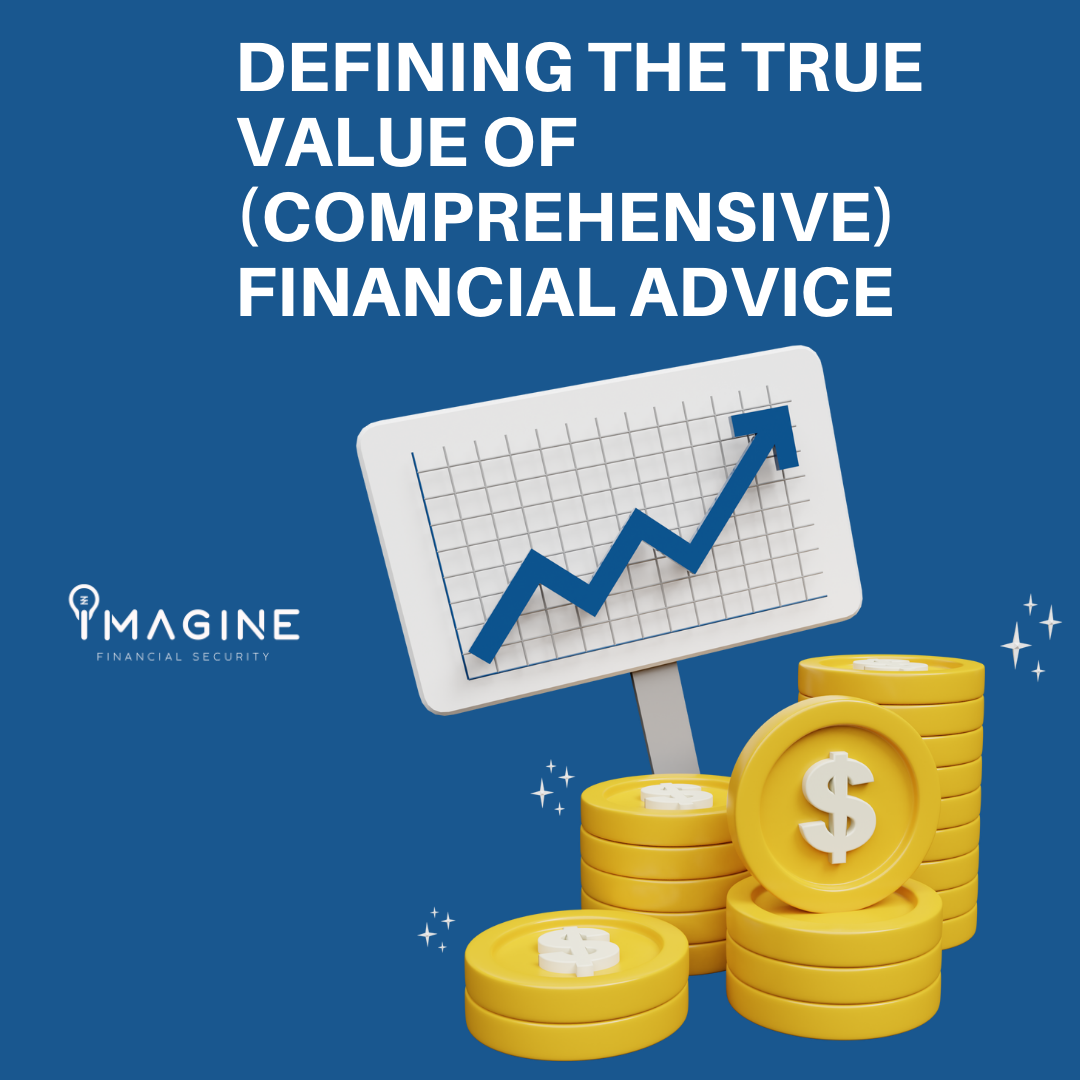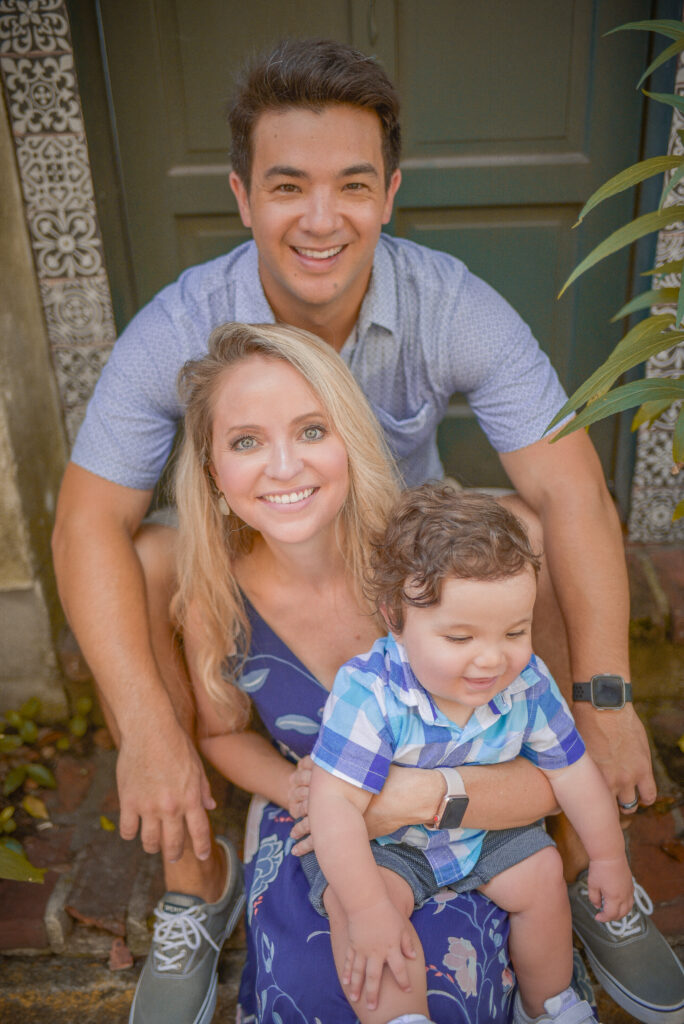Are Financial Advisors Worth It?
"How do fiduciary financial advisors add value?"
In my nearly 14 years in this business, I’ve seen financial advice given by many different professionals. Insurance agents, stock brokers, bank representatives, real estate professionals, next door neighbors and the like. I’ve seen some great advice given, but also some terrible advice. This often times leads to the general public to think “are financial advisors worth it?” This is especially the case now given the lines are blurred between different segments of the “financial services” industry. Vanguard did a study called “Advisor’s Alpha” which I have found is the most helpful and accurate summary of value-added services a comprehensive financial advisor provides. I’ve referenced it to clients and other professionals since 2014 when it was originally published. To summarize it briefly, they outline seven areas of advice that add value to the client’s portfolio by way of net returns annually. They have assigned a percentage to each of the categories which amounts to approximately 3%/year in net returns! In this article, I will highlight some of the key components of their research, as well as put my own spin on it based on my thousands of hours working with clients directly.
What is comprehensive advice?
First things first, not all advisors are comprehensive (and that’s okay). However, this article is specifically for firm’s like mine that are focused on comprehensive advice and planning, and I would argue the 3%/year figure is on the low end. I will get into this more shortly.
Here is a breakdown of Vanguard value-added best practices that I mentioned previously:

The first thing that should jump out to you is that suitable asset allocation represents around 0%/year! This is given the belief that markets are fairly efficient in most areas, and it’s very difficult for an active fund manager to consistently beat their benchmarks. This is contrary to the belief of the general public in that a financial advisors “alpha” is generated through security selection and asset allocation! What’s also interesting is that the largest value add is “behavioral coaching!” I will get into more about what this means, but I would 100% agree with this. Sometimes, we are our own worst enemy, and this is definitely true when it comes to managing our own investments. It’s natural to have the fear of missing out, or to buy into the fear mongering the media portrays. So if you take nothing else away, the simple notion of having a disciplined process to follow as you approach and ultimately achieve financial independence will add 150% more value than trying to pick securities or funds that may or may not outpace their benchmarks!
Before I dive into my interpretation of their study, I want to note that I will be using five major categories instead of seven. Some of the above mentioned can be consolidated, and there are also some value added practices I, and many other comprehensive planners, incorporate that are not listed in their research.
What are the five value-added practices? I use the acronym “T-I-R-E-S”
- Tax planning
- Income Distribution Planning
- Risk Management
- Expense Management
- Second set of eyes
Tax planning
There are four major components of tax planning a comprehensive financial advisor should provide. The first component is what we call “asset location.” The saying that comes to mind is “it’s not what you earn, it’s what you keep.” Well, taxes are a perfect example of not keeping all that you earn. However, some account types have preferential tax treatment, and therefore should be maximized through sound advice. Certain investments are better suited for these types of tax preferred accounts and other investments tend to have minimal tax impact, and therefore could be better suited OUTSIDE of those tax preferred accounts. A prime example is owning tax free municipal bonds inside of a taxable brokerage or trust account, and taxable bonds inside of your IRA or Roth IRA’s. Another example could be leveraging predominantly index ETF’s within a brokerage account to minimize turnover and capital gains, but owning a sleeve of actively managed investments in sectors like emerging markets, or small cap equities inside of your retirement accounts. According to the Vanguard study, this type of strategy can add up to 75 basis points (0.75%/year) in returns if done properly, which I would concur.
The second component is income distribution. This is often thought of much too late, usually within a few years of retirement. However, this should be well thought out years or decades in advance before actually drawing from your assets. One example I see often is when a prospective client who is on the brink of retiring wants a comprehensive financial plan. Often times they have saved a significant sum of money, but the majority of the assets are held inside of tax deferred vehicles like a 401k or IRA, and little to no assets in a tax free bucket (Roth). This type of scenario limits tax diversification in retirement. On the contrary, someone who has been advised on filling multiple buckets with different tax treatments at withdrawal will have many combinations of withdrawal strategies that can be deployed depending on the future tax code at the time. I have incorporated the rest of the income distribution value-added practice in the next section, but this practice as a whole is estimated to add up to 110 basis points (1.1%/year) in additional returns!
Legacy planning is the third component of tax planning that a comprehensive financial advisor should help with. This isn’t discussed in the Vanguard study, but it’s safe to say a comprehensive plan has to involve plans for your inevitable demise! You might have goals to leave assets to your heirs, especially if you are fortunate enough to have accumulated more than you will ever spend in your lifetime. With the SECURE Act, qualified retirement plans are now subject to the “10-year rule,” and therefore accelerating tax liabilities on your beneficiaries. However, if you incorporate other assets for legacy that can mitigate the tax impact on the next generation, this can save your beneficiaries hundreds of thousands, or even millions of dollars simply by leveraging the tax code properly.
Finally, navigating tax brackets appropriately can be another way a comprehensive advisor adds value. If a client is on the brink of a higher tax bracket, or perhaps they are in a period of enjoying a much lower tax bracket than normal, planning opportunities should arise. If you are in an unusually higher tax bracket than normal, you might benefit from certain savings or tax strategies that reduce their adjusted gross income (think HSA’s, pre-tax retirement account contributions, or charitable giving). If you find yourself in a lower tax bracket than normal, you might accelerate income via Roth conversions or spending down tax deferred assets to lessen the tax burden on those withdrawals. Additionally , considerations on the impact on Medicare premiums in retirement should also be taken into account when helping with tax planning.
As you can see, even though I am not a CPA and I’m not in the business of giving tax advice, helping you be strategic with your tax strategies is part of the comprehensive planning approach. All in, you should expect to increase your returns up to 1%/year (or more depending on complexity) by navigating the tax code effectively.
Income Distribution Strategy
In my personal practice, this ends up being a significant value add given the work I do with post-retirees. A systematic withdrawal strategy in retirement will involve a monthly distribution 12 times throughout the year. This reduces the risk of needing a sizeable distribution at the wrong time (similar to the concept of dollar cost averaging). For a 30 year retirement, this means 360 withdrawals! Most retirees have at least two different retirement accounts, so multiply 360 by 2 for 720 different income decisions to navigate. In my experience, the selling decisions are often what set investors back, especially if they are retired and don’t have the time to make it back. By putting a process in place to strategically withdrawal income from the proper investments at the right time, and maximize the tax efficiency of those withdrawals, this can add up to 1.1%/year in returns alone, according to Vanguard’s study! I’ve also had clients tell me they value their time more and more the older they get. Instead of spending their retirement managing income withdrawals each month, they would much rather travel, play golf, go fishing, spend time with their grandchildren etc. So yes, I would agree with the Vanguard study that 1.1%/year is appropriate for this category, but I would also argue the peace of mind of not needing to place trades while you are on an African Safari with your spouse is priceless! Yes, I did have a client who admitted to this, and no, his wife was not happy! That’s why they hired me!
Risk Management
The major risks you will see during your lifetime from a financial planning perspective are:
- Bear market
- Behavioral
- Longevity
- Inflation
- Long-term care
- Premature death
- Incapacity or aging process
Vanguard’s study focuses mainly on the behavioral risk (value add up to 1.5%/year) and re-balancing (.26%/year). As I mentioned earlier, it’s fascinating they rank behavioral risk as the largest value add out of any category! What is behavioral risk? Let me tell you a quick story. A client of mine was getting ready to retire at the beginning of 2020, right as the pandemic reared it’s ugly head. He had 30+ years working in higher ed and climbed the ladder to ultimately become president of his college for the last 15 years. He is a brilliant man, and a savvy business person. When the pandemic hit us, he was terrified. Not only did he see his portfolio drop from $2.5mm to $2.25mm in four weeks, but he was worried this could lead to the next depression which his parents lived through. We had at least a dozen conversations during those weeks about how he was losing sleep every night, which of course was miserable for he and his wife. Finally, in our last discussion he informed me he wanted to sell out of his retirement investments and move to cash. I plead my case in that we had a well thought out diversified strategy, and looking at the math, we had enough resources in fixed income investments to pay his bills for the next ten years! However, I told him it was his money and I was ready to place the trades if that is what he wanted. He told me he would think on it for the next 24 hours. The next day, he called me and said I was right, we had a plan, and he wanted to proceed with sticking to the plan. Well, by the end of 2020 his account not only fully recovered, but it grew to $2.75mm! I am not pumping my chest on performance, but by being the behavioral coach he needed at that time earned him $500k of growth in his portfolio (a whopping 22%).
I can literally share a hundred of these stories not just from the pandemic, but stories from 2008/2009, the dot com bubble etc. The point is, having an advisor you trust that can help you navigate through the ups and downs of the market and tell you what you NEED to hear, not what you WANT to hear is invaluable. Furthermore, it can free up your time to focus on what matters in your life and have the professionals worry about the market for you!
So all in all, I would agree on the 1.5%/year value add for behavioral coaching and .26%/year to help re-balance the portfolio properly. However, Vanguard’s study doesn’t even take into consideration proper insurance planning and estate planning advice a comprehensive advisor gives to their clients which are also value-adds in and of themselves. In that sense, I would argue this category can add up to 2%/year in additional returns to a client.
Expense Management
This is oftentimes overlooked when working with a financial advisor. Much of the public believes working with an advisor will be more expensive! However, many of them are used to being sold high commission investment products or services that are overpriced. However, through due diligence and leveraging the proper research, Vanguard estimates clients should save on average 0.26%-0.34%/year on expenses. From my personal experience, this might even be on the low end. However, for arguments sake and given it’s their research, let’s say we agree with the value-added range set forth.
Second set of eyes
Vanguard doesn’t reference this in their study, but that objective point of view is sometimes necessary to drive positive change. I don’t have any specific data on how to quantify this, but I hear time and time again from clients that they so much appreciate having me as an accountability partner. Think about trying to get in tip top shape without a coach or personal trainer! You might do okay, but you certainly wouldn’t push yourself as hard as you could have if you had a coach or trainer. On the contrary, I often hear from new prospective clients how information overload and the fear of making a mistake has caused a whole lot of inaction, which can significantly hurt returns and performance. Think about a surgeon attempting to perform surgery on their own body! They simply wouldn’t. Not that I am comparing my occupation to a surgeon, but someone working to achieve financial independence would benefit substantially from a trusted third party to help navigate all of the different financial decisions they will encounter in their lifetime. This also could be true for married couples who might have differing views on finances. After all, financial reasons are the #1 cause for divorce in America. If I can help a married couple get on the same page with their financial vision, that is a win for them, no questions asked! Without specific data, I would have to say my gut feel is that objectivity should add an additional 0.5%/year in returns over the duration of a relationship, as well as more self confidence and peace of mind that you are on the right path.
If we tally up our TIRES acronym:
- Tax planning = 1%/year
- Income Distribution Planning – 1.1%/year
- Risk Management – 2%/year
- Expense Management – 0.26% – 0.34%/year
- Second set of eyes – 0.5%/year
This gives us a total value add range of 4.86% – 4.94%/year in additional returns. My firm’s average fee is roughly 0.85%/year. This is why I get so excited to help new and existing clients. The value you receive, is far greater than the cost to pay me, creating a win-win situation. Now, not EVERY client will experience in additional 4-5% in additional value. Some might receive 2%/year, some might receive 10%/year! However, all of you who have yet to work with a comprehensive planner, or for those of you working with an advisor who may not be doing a comprehensive job, it might be time to reevaluate and see what holes you need to fill. If you are interested in learning how to work with me directly, you can schedule a mutual fit meeting with the button below. Or, you can visit my “Process” and “Fees” pages on my website.












